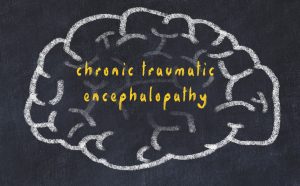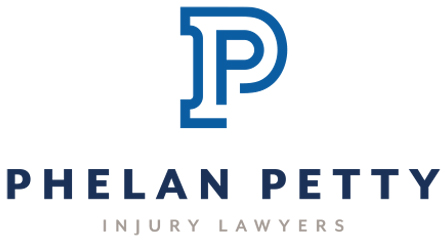Repetitive Subconcussive Hits Can Lead to Chronic Traumatic Encephalopathy
 Football, a popular and beloved sport, carries inherent risks that extend beyond the immediate concern of traumatic brain injuries. While the focus on concussions and their long-term effects has gained significant attention in recent years, there is growing awareness of another potential danger: Repetitive Subconcussive Hits. These are repetitive blows to the head that do not result in immediate concussion symptoms but can still have cumulative effects on the brain over time.
Football, a popular and beloved sport, carries inherent risks that extend beyond the immediate concern of traumatic brain injuries. While the focus on concussions and their long-term effects has gained significant attention in recent years, there is growing awareness of another potential danger: Repetitive Subconcussive Hits. These are repetitive blows to the head that do not result in immediate concussion symptoms but can still have cumulative effects on the brain over time.
Understanding the impact of these repetitive subconcussive hits is crucial in recognizing the broader risks associated with participating in football and other contact sports. By examining the potential consequences of these repetitive hits, we can shed light on the comprehensive nature of the dangers athletes may face and explore strategies for mitigating their long-term effects, such as chronic traumatic encephalopathy.
What is chronic traumatic encephalopathy (CTE)?
According to the Alzheimer’s Association, “chronic traumatic encephalopathy (CTE) is a progressive and fatal brain disease associated with repeated traumatic brain injuries (TBIs), including concussions and repeated blows to the head.” CTE is associated with a range of symptoms, including memory loss, confusion, mood changes, aggression, and problems with impulse control. CTE can eventually lead to deteriorating mental diseases such as Alzheimer’s disease. People participating in contact sports such as football, boxing, or hockey are at a higher risk of suffering CTE later in their lives due to the increased number of head injuries they suffer. As researchers continue to study CTE and its link to head trauma, there is growing concern about the long-term consequences for athletes and the need for improved prevention, diagnosis, and treatment strategies.
What is the cause of CTE?
As stated earlier, repeated trauma to the head can cause CTE, but the diagnosis of CTE can only be confirmed postmortem through an autopsy that examines the presence of specific brain changes associated with the disease. When CTE is suspected, a comprehensive evaluation involving a thorough medical history, mental status testing, neurological examinations, and brain imaging is conducted to rule out other potential causes. While CTE and Alzheimer’s disease both involve the accumulation of tau protein in nerve cells, researchers have identified distinctive patterns of abnormal tau buildup in the tissues surrounding blood vessels specific to CTE. Advancements in imaging techniques have allowed for better differentiation between CTE and Alzheimer’s, although further research is necessary to fully comprehend the brain alterations associated with CTE and its relationship to dementia.
While CTE was previously thought to be caused by repeated concussions or brain injuries, it has been found that “cumulative force to the head — not diagnosed concussions — is the best predictor of future brain disease,” as per a study conducted by the scientific journal Nature Communications. This is important to know for parents who have children who are involved in contact sports.
How to treat and prevent CTE
While there is no known cure for CTE, there are treatment options available to manage its symptoms and provide support. The approach to supporting individuals with CTE is similar to that of dementia care. This includes a range of interventions such as physiotherapy to address movement difficulties, occupational therapy to assist with daily activities and home adaptations, and speech and language therapy to address memory, speech, and swallowing difficulties. Your care will involve a multidisciplinary team of specialists, including a general practitioner, a dementia care specialist, and social care services. These experts will collaborate to develop a comprehensive care plan tailored to your long-term needs.
In most cases of CTE, the condition was brought on by participating in contact sports where head injuries are common. If you do not want to take your child out of the sport entirely, checking with the school leaders to ensure that proper equipment is being used, and appropriate caution is being taken during practice and games can help prevent further head injuries.
Proper care following a concussion is crucial in reducing the risk of developing CTE, according to medical professionals. The Centers for Disease Control and Prevention (CDC) emphasizes the significance of appropriate care and provides six recommended steps for young athletes recovering from a concussion before returning to their sport. It is essential that athletes only resume playing with the approval of a physician and under the guidance of a certified athletic trainer if available.
The gradual reintroduction of more strenuous activities over weeks or months is recommended for athletes preparing to return to their sport. The recommended steps include:
- Back to regular activities. A combination of active and rest days.
- Light aerobic activity. Engaging in light exercises to elevate the heart rate.
- Moderate activity. Participating in activities that further increase the heart rate, such as moderate jogging.
- Heavy, non-contact activity. Involving activities like sprinting, running, and non-contact drills.
- Practice and full contact. Resuming regular practice sessions, including full contact drills.
- Return to competition. Finally, being cleared to participate in competitive games or matches.
By following these steps and seeking appropriate medical guidance, athletes can prioritize their recovery and minimize the potential long-term effects of concussions, including the risk of developing CTE.
At Phelan Petty, we understand the devastating impact of sport-related head trauma and its potential to cause serious brain injuries. We are committed to providing our clients with the utmost care and attention they deserve, which is why we focus on a limited number of complex brain injury cases each year. Our dedicated team of Richmond-based TBI attorneys is equipped with the knowledge and compassion necessary to guide you through the legal process. If you or a loved one has suffered a traumatic brain injury, we are here to offer our expertise and support. Contact our team today for compassionate assistance tailored to your specific needs. To schedule a free consultation, call us or use our contact page. We proudly serve clients in Richmond and across Virginia.
Michael Phelan is a Virginia trial attorney who practices with a special focus on traumatic brain injury (TBI) cases, pharmaceutical and medical device claims, product liability cases, and truck accidents. Michael’s peers have consistently recognized him for his excellence as a trial lawyer, and his clients have praised him for his commitment to deep research, his outstanding communication skills, and his sincerity and dedication.
